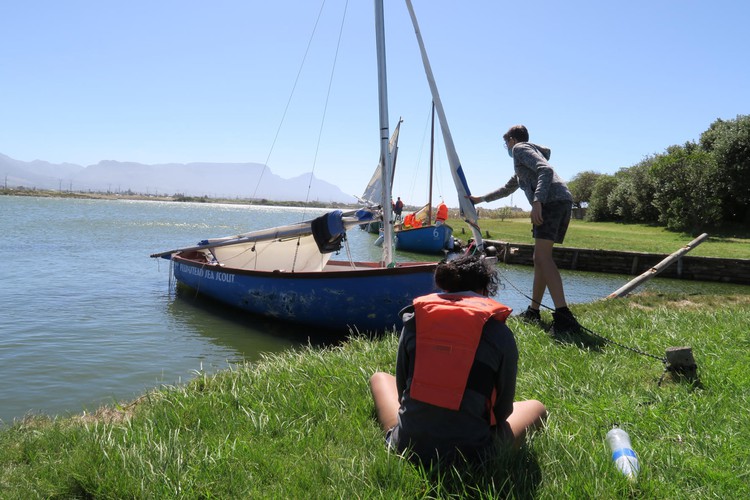Zandvlei opens for boating after sewage scare
But Rietvlei and Zeekoevlei are still closed
Zandvlei has been opened for boating after being closed for four months because of dirty water. Archive photo: Steve Kretzmann
Zandvlei Estuary in Cape Town, which was closed for four months because of sewage in the water, is open again for boating but not for swimming.
But the Marina da Gama channels that are part of Zandvlei will remain closed, according to a statement by the City of Cape Town.
The City said that though the water quality of Zandvlei is still “at risk”, the E. coli count in the water has improved enough for “intermediate contact”. This excludes swimming and diving.
“The city’s urban waterways are generally subject to compromised water quality from various sources,” the City said. Full contact with the water, such as swimming, should be avoided.
A report released earlier this year, before the vleis closed, showed that the water quality of Cape Town’s vleis, estuaries, and rivers has been declining over the past 40 years.
Zandvlei is the first of three vleis in Cape Town to reopen after significant sewage spills. Zeekoevlei and Rietvlei remain closed to the public. The water quality results from May to August released by the City showed dangerous levels of E. coli in all three vleis.
The closure of the vleis forced sports clubs around Cape Town to suspend activities like canoeing, rowing, and sailing.
While the partial reopening of Zandvlei is welcomed, it’s still “not ideal” for these activities, according to Robert Hart, co-chair of the Western Cape Canoe Union (WCCU) and former chair of the Peninsula Canoe Club. Hart welcomed the partial opening of Zandvlei, but said a “far more transparent” approach was needed from the City.
“The City must recognise that they are not actually serving the public’s interest by putting these blanket bans out,” said Hart.
He also questioned the water quality data that the City released. Zandvlei showed significantly high levels of E. coli at 8.3 million colony-forming units (cfu) per 100ml a few days before the vlei was closed in May, according to the data released by the City.
“I’m not disputing that there are sewage spills, and we know the sewage spills are getting worse and happening more frequently. But the impact this is having on water quality is nowhere near the City’s readings,” said Hart.
Reasons for the sewage spills over the past few months, according to the City, included the failure of the Clifton Road pump station in May and the Keyser River pump station in July. In August, City officials discovered an overflowing manhole next to the Keyser River.
Support independent journalism
Donate using Payfast

Next: Steel workers countrywide down tools, demanding 8% wage hike
Previous: Activists to sue NPA over “false” arrest and imprisonment
© 2021 GroundUp. This article is licensed under a Creative Commons Attribution-NoDerivatives 4.0 International License.
You may republish this article, so long as you credit the authors and GroundUp, and do not change the text. Please include a link back to the original article.
We put an invisible pixel in the article so that we can count traffic to republishers. All analytics tools are solely on our servers. We do not give our logs to any third party. Logs are deleted after two weeks. We do not use any IP address identifying information except to count regional traffic. We are solely interested in counting hits, not tracking users. If you republish, please do not delete the invisible pixel.

